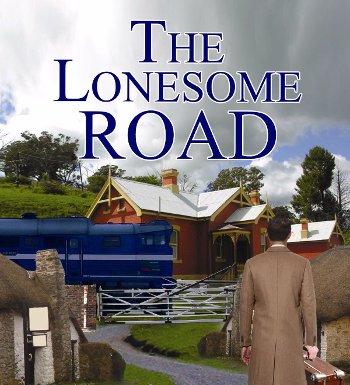FOR James Farrell, construction worker-turned-first-time novelist, his reason for leaving Ireland in 1960 was simple — boredom.
"You could hear the clock ticking,” he says, leaning over a glass of white wine in a busy pub on Kilburn High Road. “It was all right if you were about 70, but even then I wouldn’t have liked it.”
We’re sat by the bar. Farrell is wearing a long black coat, worn trousers and a checked shirt. He's 72, and has plenty of flicker in his piercing blue eyes. Back in the ’60s, there simply wasn’t any work in the rural village of Oranmore, Co. Galway, he says.
“You had to know somebody to get a job,” he adds. “A TD or someone.”
So Farrell joined the estimated one million working-class Irish men and women who made the life-changing trip across the Irish Sea in the ’50s and ’60s to help repair Britain after the devastation of World War II.
They wound up in pubs like this one. And many years later Farrell wrote his first novel, The Lonesome Road.
The story — a vividly spun tale of one man’s emigration experience — follows Jack Daly, who lands in Camden Town on a wing and a prayer having left the emigrant-ravaged town of Castleford, and leaving behind humble gatherings.
Daly winds up in the dancehalls of Hammersmith and Cricklewood’s Galtymore, which, along with the Crown, gets name checks in the novel.
How close does truth follow fiction?
“Yeah, [it was] more or less the same. You’d have to look for somewhere to stay put, get a job — all in the same breath,” Farrell cackles a laugh.
“I think I had £7 [when I arrived]. Enough to do you two weeks, you know? Otherwise…,” Farrell pauses to chop the air dismissively.
Shortly after, another white wine appears.
 The Lonesome Road by James Farrell
The Lonesome Road by James FarrellFarrell’s own journey to London was in 1960. What sort of work were you doing?
“I was out in the tunnels; under the ground; doing construction work; anything. I worked in all the big firms, Murphys, anyone… the highest bidder,” Farrell adds.
“If you get going, you could make a good living here — with beer every night.”
In the book, the emigrants all have a shared goal — the “dream of returning”. Was the reality like that?
“Well, you’d hear about it,” says Farrell. “Everyone kind of had that sort of notion (of returning home).”
By 1987, Farrell had made enough from the building trade to buy a pub in Hereford. However, he soon tired of working nearly “365 days a year” for three years.
And it was after a return to construction, in 1990, when he found he had more time to write his story and “blast” out The Lonesome Road in six months.
Why did he wait so long to tell his story?
In fact, he had it finished by 1992, he tells me after a deep, bellowing laugh. It took more than two decades to find a publisher.
“I had the story in my head a long time before though.”
Eventually, Farrell had to retire early due to illness. How would he compare the new wave of Irish emigrants today?
“They was a community thing here at the time,” he says. “If somebody was down and out they’d give him a hand. There was no class distinction amongst the Irish and good camaraderie.”
Farrell recounts a story in the very same pub from years before.
“It would be busy here Sunday mornings,” Farrell affirms with a look around at the empty seats.
What does the future hold after this book? “I’ve got two more [stories]. I've got a book of short stories after that,” he says. “I think it’ll be time to call the undertaker then,” he adds with a laugh.
I tell Farrell about a recent report by my colleague Robert Mulhern, which portrayed the ’60s as swinging times for the Irish in London, (in particular Cricklewood) — as hard-living places full of sex and violence.
Two themes not avoided in The Lonesome Road. Did this match your experience?
“Oh yes,” Farrell agrees, adding: “I’ve just touched on it in the book. There’s a lot more to it than that.
"In my third one you’ll see a bit more of it. I can afford to take more chances now.”
The Lonesome Road is published by Olympia Publishers

